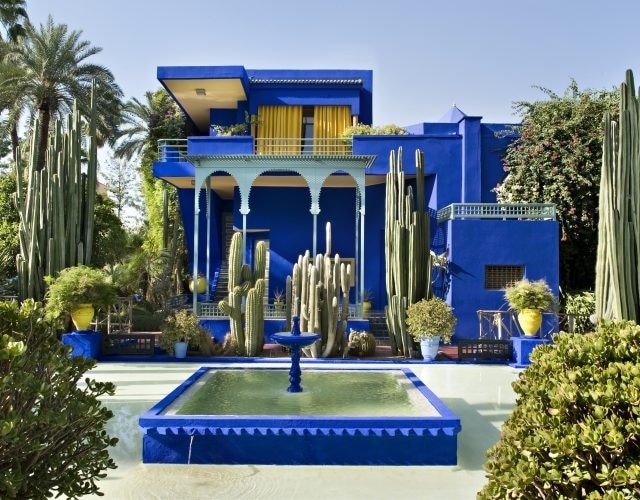It is February 1966, Yves Saint Laurent and his partner Pierre Bergé arrive in Marrakech aboard an Air France Caravelle aircraft. The sky is overcast, the colors are faded, and rain begins to fall. But the Moroccan sun will soon come out, marking the beginning of a love story that will last until the French designer's death in 2008. The relationship between Yves Saint Laurent and Morocco was one of gratitude and rebirth, both personally and creatively, a bond that forever transformed the French couturier's aesthetic vision.
In Morocco, Yves Saint Laurent found a new palette of colors — the ochre of the souks, Majorelle blue, the spiced tones of fabrics — which infused his collections with a vibrant and unprecedented sensuality. The lines of the caftans, the relaxed elegance of traditional clothing, and the freedom he breathed in the narrow streets of Marrakech deeply influenced his style, leading him to experiment with more fluid, lighter shapes and a new conception of beauty. Marrakech was not just a place for Saint Laurent to escape from Parisian concerns, but a creative refuge and source of inspiration for over forty years.
The journey to Marrakech and the House of the Snake
After taking the reins of the Dior fashion house at just 21 years of age, Yves Saint Laurent seemed destined to become the new king of Parisian haute couture. However, the reality was more complex: the Algerian War forced him into traumatic military service in 1960, which was made worse by the discovery upon his return that he had been replaced as creative director at Dior. Despite his emotional fragility and state of deep crisis, the Yves Saint Laurent fashion house was born the following year, thanks in part to the determination and support of entrepreneur and partner Pierre Bergé.
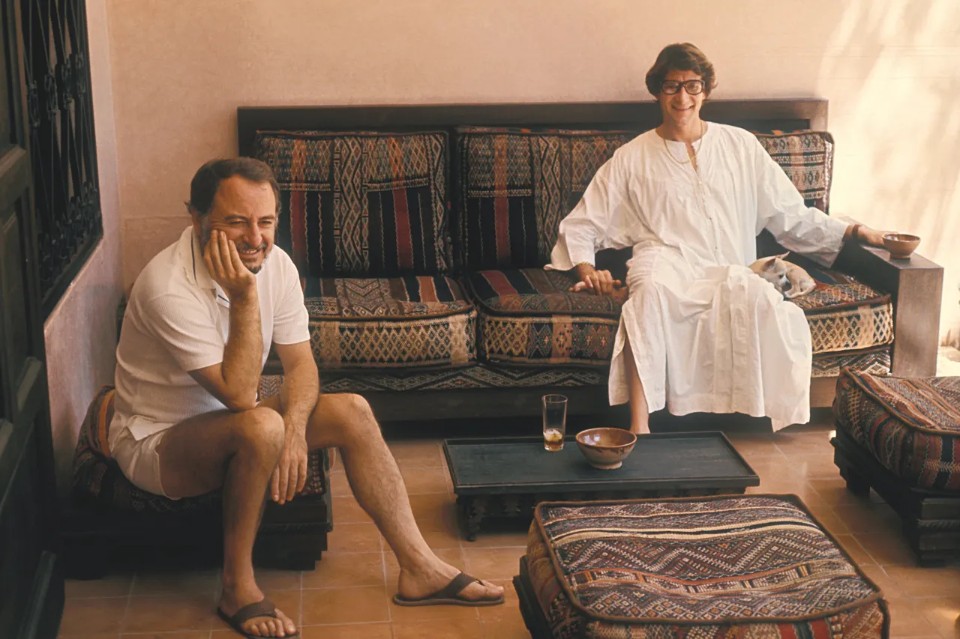
The desire to escape, to find light, to find another place that would heal their wounds and regenerate their souls, far from judgmental Paris, led the couple to Morocco, to Marrakech, which Pierre Bergé himself describes in his book Yves Saint Laurent. Une passion Maroccaine (Éditions de La Martinière, 2010) as a source of inspiration for the French fashion designer.
Soon, Yves found inspiration in Morocco and orientalism.
Pierre Bergé
On their flight back to Paris, Saint Laurent and Bergé already had in their hands the deed of sale for their first Moroccan home, Dar el-Hanch, the “House of the Snake,” so named because of a large snake drawn by Saint Laurent himself in the living room. This first home represented the beginning of a deep and lasting bond: Morocco became, more than a place, an extension of his creative imagination.
The Seventies
In the 1970s, Marrakech was the bohemian mecca. Along with Talitha and Paul Getty, artists and personalities such as Mick and Bianca Jagger, Paul Bowles, Alain Delon, and Andy Warhol also settled there or visited for short periods. In this setting of friendly relationships and experimental exoticism, Saint Laurent found his “laboratory of the soul.” Every June 1 and December 1, he moved to Marrakech to design his collections, far from the media pressure and expectations of Parisian fashion.
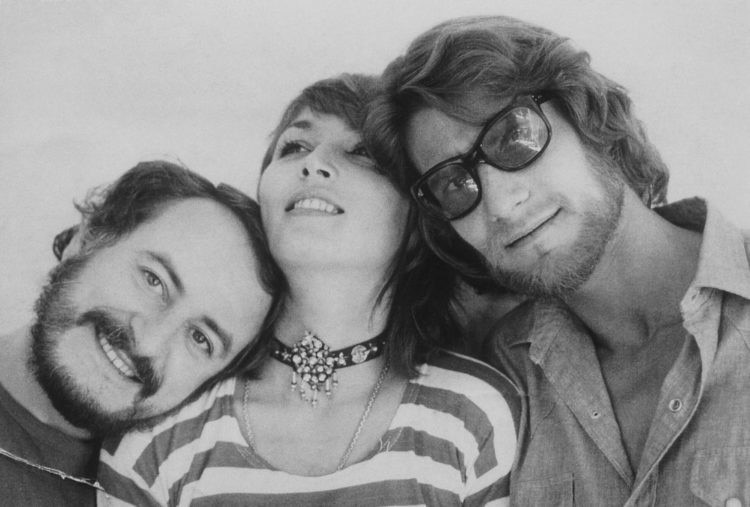
In Morocco, Saint Laurent discovered colors: the ochres and reds of the walls, the pink of the earth, the lush greens of the gardens, Majorelle blue, and the scent of spices. A synesthesia translated into his collections, which began to incorporate elements of Moroccan culture: caftans, gellabas, ṭarbūsh, golden embroidery, and flowing fabrics transformed into haute couture. Not superficial exoticism, but a refined and personal reinterpretation.
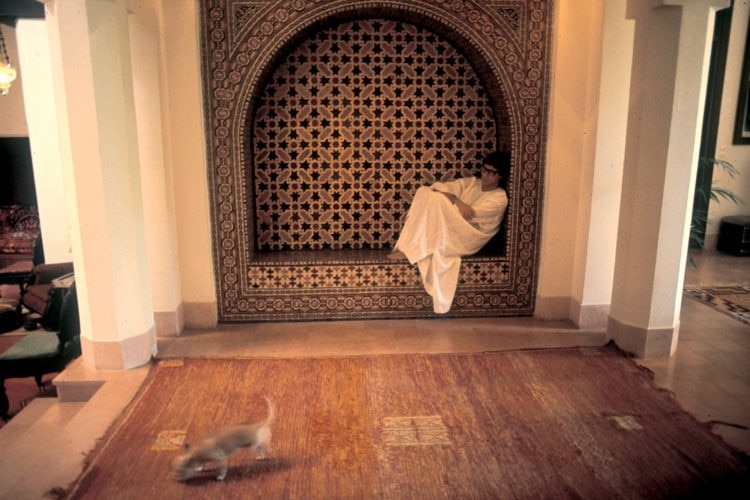
In 1974, Saint Laurent and Bergé purchased their second home in the city, called Dar es Saada, whose renovation and decoration project was entrusted to interior designer Bill Willis, a friend of the Gettys, who translated the harmony between East and West into the details of the residence.
The renovation of the Majorelle Gardens
Once again, it is Bill Willis who takes charge of the most extraordinary project that Bergé and Saint Laurent decide to support in Marrakech: the restoration of the Majorelle Garden. This garden, along with the Moorish-style villa designed by architect Paul Sinoir — later renamed Villa Oasis and, since 2011, home to the Pierre Bergé Museum of Berber Arts — was originally created between the 1920s and 1930s by the French painter Jacques Majorelle, and was in a state of neglect when the couple discovered it.
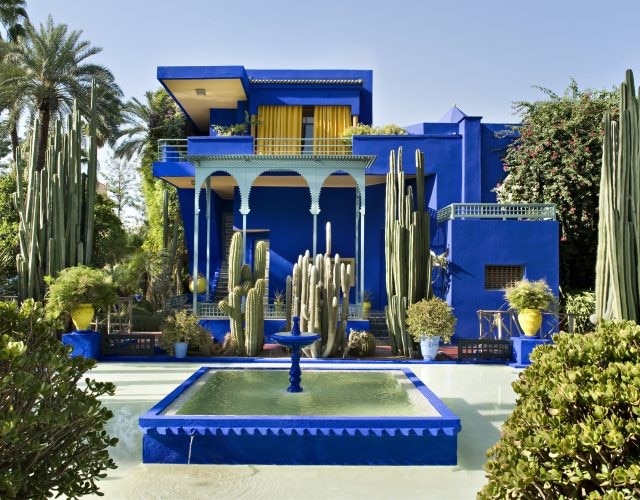
Captivated by the intensity of the colors—particularly the famous “Majorelle blue”—they decided to purchase the Majorelle Gardens in 1980. For Saint Laurent, the garden became not only a refuge, but a manifesto: a place where nature, art, and memory intertwined. In this restoration work, the two chose to protect the authenticity of the garden and not alter its history and value.
“They could have bought a private jet, but instead they saved Majorelle,” said director Jalil Lespert in a 2014 interview with The Telegraph on the release of his biopic dedicated to the French fashion designer. After Yves Saint Laurent's death in 2008, his ashes were scattered in the rose garden of Villa Oasis: a symbolic gesture that sealed, for the last time, the fusion between the man and the place he loved most.
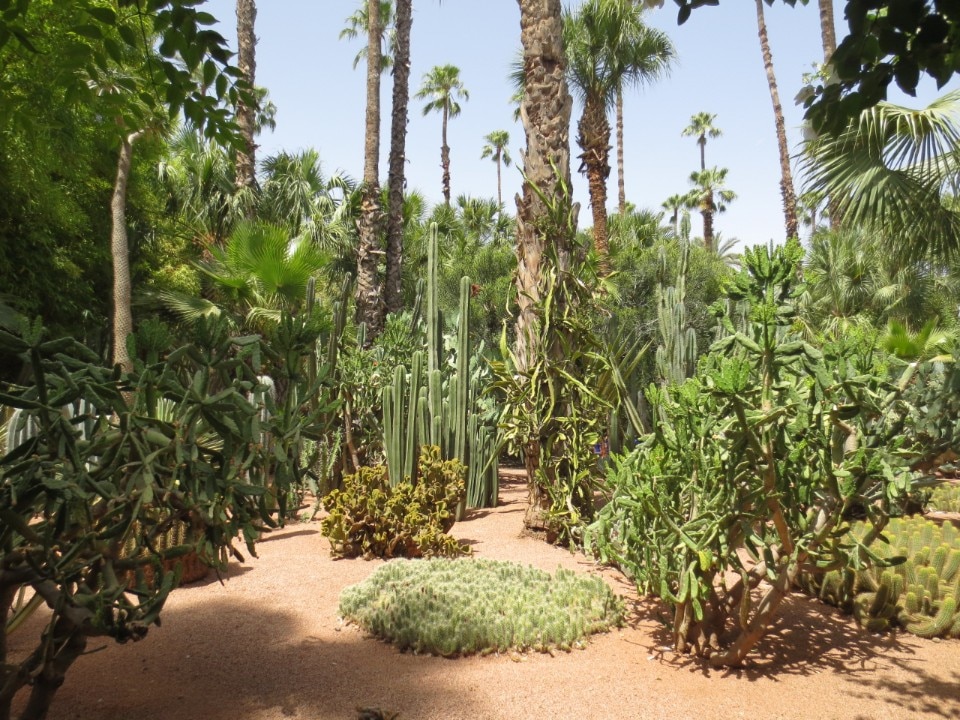
After restoring the Majorelle Gardens, Yves Saint Laurent and Pierre Bergé also purchased a summer residence in Tangier in 1990, Villa Mabrouka (meaning “House of Fortune”). The villa reflected the couturier's refined taste, combining traditional Moroccan elements with Art Deco details. Today, it has been transformed into a romantic hotel, retaining some of the original details chosen by Saint Laurent and Bergé, including Murano glass chandeliers, pointed arches, exposed beam ceilings, and monochrome marble floors.
A legacy that lives on at Musée Yves Saint Laurent Marrakech
In October 2017, Yves Saint Laurent's vision took on a new form with the opening of the Musée Yves Saint Laurent Marrakech, just a stone's throw from the Majorelle Garden. Consulting the designer's archives, the founders of French architecture firm Studio KO, Olivier Marty and Karl Fournier, drew inspiration from the fascinating tension between straight and curved lines, and the alternation between delicate strokes and bold cuts in the French couturier's creations.
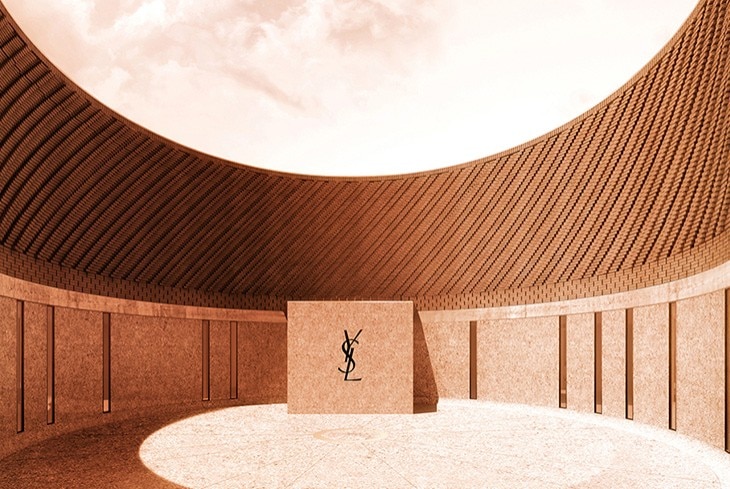
This formal dialogue inspired the architecture of the building, which on the outside appears as a composition of cubic volumes, covered with a sort of brick lace, evocative of the weave of a fabric. The interior, in stark contrast, resembles the precious lining of a dress: soft, smooth, and pervaded by light. The museum houses over 5,000 original garments, 15,000 accessories, and thousands of drawings, sketches, and photographs. In addition to the permanent collection, it also hosts temporary exhibitions and events. The museum is now managed by the Fondation Jardin Majorelle, which safeguards and promotes the legacy of Yves Saint Laurent and Pierre Bergé through cultural and philanthropic initiatives.
Opening image: © Fondation Jardin Majorelle, photo Nicolas Mathéus


